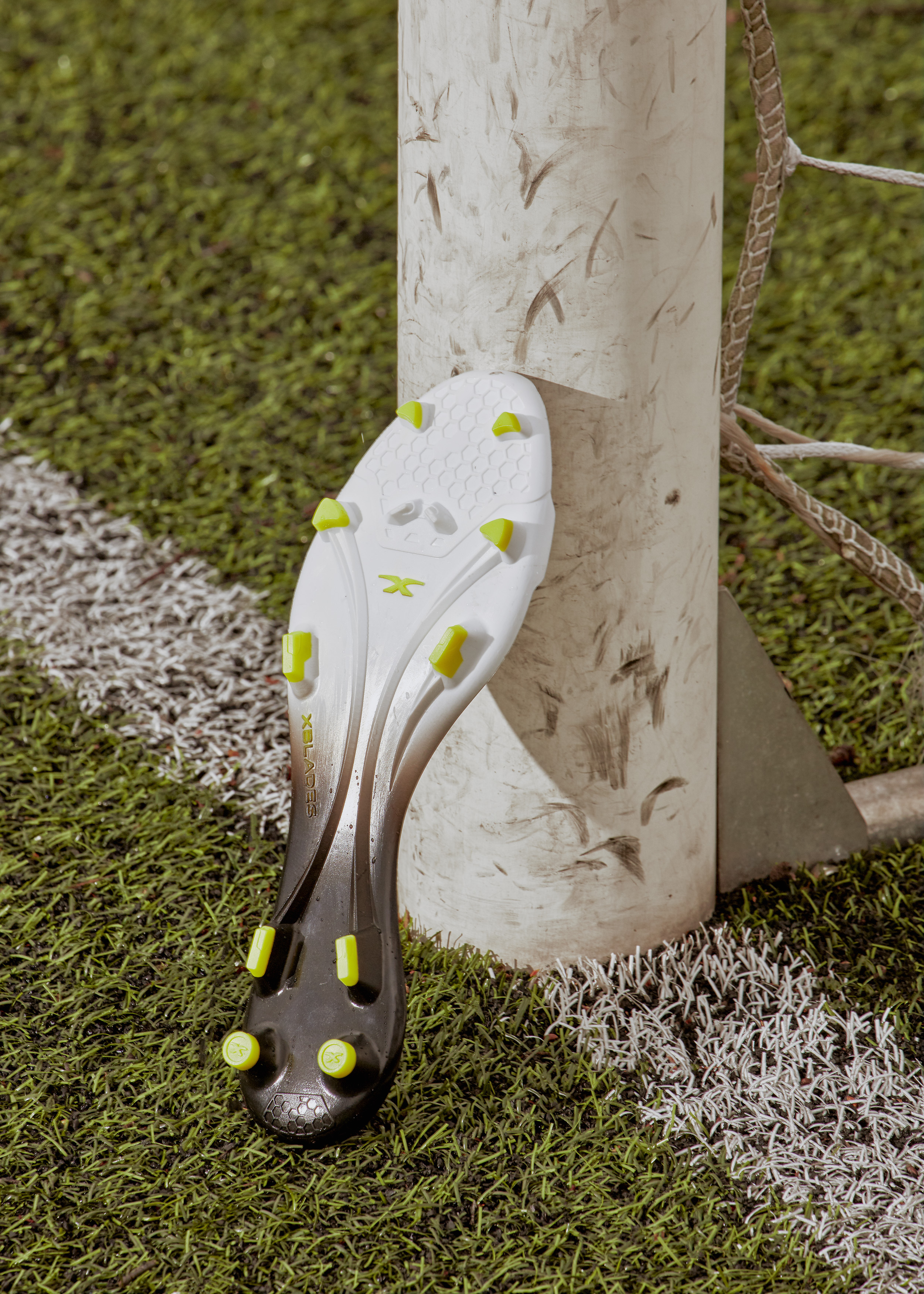XBlades: The Future of the Footy Boot
Photo by Ben Clement.
Words by Samantha Allemann
Photos by Ben Clement
In the endless search for perfection, commercial sports are adopting new technologies to revolutionise the way players perform. An unexpected side effect is that, as 3D printing makes sports gear more customisable than ever, manufacturing is being returned to home soil.
“Historically, Australia’s sports industry has been dictated by larger international brands,” says Leighton Richards, CEO of Australian sports apparel company XBlades. “They’re focused on international sports like basketball and soccer. Here in Australia, we have sports that are quite unique to us, such as AFL, and other sports that are more played in Commonwealth countries, like cricket, netball and rugby.”
XBlades was founded in the late 1980s by AFL player and biomechanist David Miers, who saw a connection between boot studs and the risk of knee injuries. A couple of years ago, the company started building customised boots for elite athletes.
“The ability to customise products for Australian sports was an unmet need, but can now been done through different manufacturing processes,” says Richards. “It’s not enough to just make a football boot – we need to make a midfielder’s boot, and we need to put characteristics in the boot to protect that performance for that position."
“Someone who plays in the midfield in AFL might run 16 kilometres at high intensity, versus a player who plays full-forward who runs five kilometres but in short bursts, so the materials we use and construction of the products and the design will be very different.”
Different, and traditionally much more time consuming. Sam Hayes, who looks after XBlades’ marketing and player sponsorship, says prototyping and testing a customised shoe previously involved “creating a design, sending it to a factory, creating a mould, printing the mould and shipping it back to Australia. We then [had] to make any adjustments and restart the process.”
Yet 3D technology is streamlining these processes.
Photo by Ben Clement.
Photo by Ben Clement.
Photo by Ben Clement.
“With 3D printing, we would be able to turn around prototypes within a matter of hours, meaning we can refine an entire outsole in the time it would take to receive the first prototype from overseas.”
A 3D print of the athlete’s foot can also be created as a highly customised ‘last’ – the wooden foot-shaped block that the upper material is wrapped around to guide a boot’s fit. The last can be tailored to the athlete’s hips, knees, ankles and the way they move. “This custom last can then be used in a manufacturing line here in Australia to produce a fully customised pair of boots in less than two days,” says Hayes.
Beyond footwear, there are plenty more opportunities for 3D printing in the sports apparel realm, especially for specialised equipment such as protective gear. “I think we will start to see a lot more focus on unique fit and tailored items,” says Hayes. “As for the feasibility of bringing that to a retail consumer, I’m not sure there’s much profitability in it for your giants like Nike and Adidas, but we might start seeing really agile, innovative companies find their way into the market.”





